What is On-Page SEO and Why Does it Matter?
![]()
On-Page SEO, also known as On-Page SEO, refers to a set of actions you take within your website to improve your site’s ranking in search engines like Google.
These actions include optimizing content, site structure, HTML tags, and other technical and content factors.
The importance of on-page SEO stems from the fact that search engines use complex algorithms to examine and rank websites.
On-page SEO helps you optimize your website for these algorithms and increase your chances of being seen in search results.
A website with strong on-page SEO can attract more organic traffic, which often comes with a higher conversion rate.
In other words, visitors who come to your site through search are more likely to become customers.
For example, optimizing page titles and Meta Descriptions helps search engines better understand the content of the page and display it correctly in search results.
Also, using appropriate keywords in text and images can help improve the site’s ranking in relevant searches.
On-page SEO is a vital component of an overall SEO strategy and should not be ignored.
By optimizing on-page SEO, you can build a strong foundation for success in the online world.
For more information on basic SEO concepts, you can visit this Wikipedia link.
Worried about losing customers because you don’t have a professional online store?
Forget those worries with online store design by Rasaweb!
✅ Dramatic increase in sales and visitor-to-customer conversion rate
✅ Professional and user-friendly design that builds customer trust
⚡ Get a free consultation from Rasaweb
Keyword Research – Finding the Best Opportunities

Keyword Research is one of the most important steps in on-page SEO.
This process helps you find the words that users use to search for products, services, or information related to your business.
By identifying these words, you can optimize your content to rank higher in the search results for these words.
There are various tools you can use to conduct keyword research.
Google Keyword Planner is one of the most popular and free tools that allows you to check search volume, competition, and related keyword suggestions.
Other tools like SEMrush, Ahrefs, and Moz Keyword Explorer also offer more advanced features and can help you identify high-potential keywords.
When choosing keywords, there are a few things to keep in mind.
First, the keywords should be relevant to your business and content.
Second, they should have a reasonable search volume.
Keywords with very low search volume will not attract a lot of traffic to your site.
Third, you should consider the competition for the keywords.
Keywords that have very high competition can be difficult to rank for.
It’s best to use a combination of short and long-tail keywords in your on-page SEO strategy.
Short keywords usually have a higher search volume, but the competition is also greater.
Long-tail keywords are more specific search terms that usually have a lower search volume, but the competition is also lower and they have a higher conversion rate.
For example, instead of the keyword “sports shoes,” you can use the long-tail keyword phrase “buy men’s running shoes.”
Optimizing Titles and Meta Descriptions

The Title Tag and Meta Description are two important elements in on-page SEO that appear in search results.
The page title is the clickable title that appears at the top of the search result and should be compelling and relevant to the page’s content.
The meta description is a short summary of the page’s content that appears below the title and should encourage the user to click on the link.
To optimize the title and meta description, you must follow a few points.
First, the page title should include the page’s primary keyword.
Second, the title should be catchy and enticing, encouraging the user to click.
Third, the title should not be longer than 60 characters, otherwise it will be shortened in search results.
Fourth, the meta description should also include the page’s primary keyword.
Fifth, the meta description should provide an accurate and engaging summary of the page’s content.
Sixth, the meta description should not be longer than 160 characters.
For example, if your page is about “On-Page SEO Training,” the page title could be “On-Page SEO Training – Comprehensive and Step-by-Step Guide” and the meta description could be “On this page, you’ll learn a comprehensive and step-by-step guide to on-page SEO.
Improve your site’s ranking in Google using these techniques.”
Optimizing titles and meta descriptions is one of the simplest and most effective ways to improve your site’s on-page SEO.
By spending a little time writing engaging and relevant titles and meta descriptions, you can increase your click-through rate (CTR) in search results and attract more traffic to your site.
| Element | Description |
|---|---|
| Title | The page title that is displayed in search results |
| Meta Description | A short summary of the page’s content |
Content Optimization – Producing Valuable and Engaging Content

Content is king! This famous saying in the world of SEO shows the high importance of producing valuable and engaging content.
Search engines seek to provide users with the best and most relevant results, so websites that provide high-quality and useful content rank higher.
To optimize content, there are a few things to keep in mind.
First, your content should be relevant to your target keywords.
Second, your content should be valuable and useful and answer users’ questions and needs.
Third, your content should be engaging and readable and encourage the user to spend more time on your site.
Fourth, your content should be updated regularly so that search engines know that your site is active and dynamic.
Avoid creating duplicate content, as this can harm your site’s ranking.
If you have to use content from other sites, be sure to cite the source.
Also, try to make your content more engaging by using images, videos, infographics, and other multimedia elements.
On-page SEO means trying to present your content in a structured and understandable way for search engines and users.
Using headings, subheadings, lists, and short paragraphs can help with the readability of your content.
Also, using internal links and external links can help improve the site structure and credibility.
Internal links help users and search engines navigate your site and better understand the relationships between your site’s pages.
Finally, don’t forget that your primary goal should be to provide valuable and useful content to users.
If your content is useful to users, search engines will also recognize it and improve your site’s ranking.
Tired of your online store website not generating as much revenue as it could?
Rasaweb, a specialist in designing professional online store websites, will solve this problem forever!
✅ Increased sales and revenue rates
✅ High loading speed and excellent user experience
⚡ Get a free online store design consultation
Image Optimization
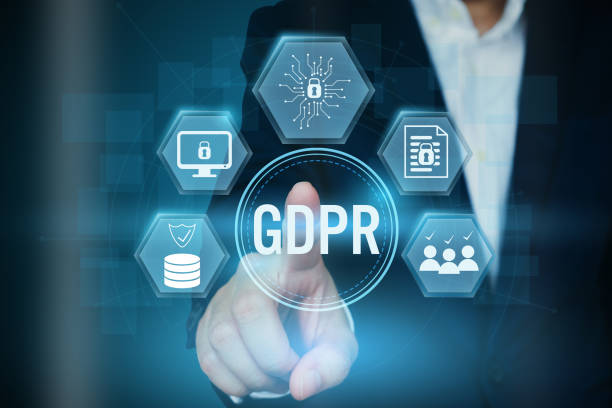
Images play an important role in the visual appeal and user experience of a website, but if they are not optimized properly, they can slow down site loading speed and harm on-page SEO.
Image optimization involves several steps, which we will discuss below.
First, you should use the appropriate format for images.
JPEG, PNG, and GIF are the most common image formats.
JPEG is suitable for images with many colors like photos, PNG is suitable for images with graphics and text, and GIF is suitable for animated images.
Second, you should reduce the size of the images.
Large images can significantly slow down site loading speed.
To reduce image size, you can use online tools or image editing software like Photoshop.
Try to reduce the size of the images as much as possible without significantly reducing their quality.
Third, you should use the ALT tag for images.
The ALT tag is an alternate text for the image that is displayed if the image does not load.
The ALT tag also helps search engines better understand the content of the image.
In the ALT tag, you should provide a brief description of the image and also include the page’s primary keyword.
Fourth, you should optimize the image file names.
Before uploading images, change their file names to a relevant and descriptive name.
For example, instead of the file name “IMG_1234.jpg,” use the file name “on-page-seo-training.jpg.”
By optimizing images, you can improve your site loading speed, increase user experience, and help search engines better understand your site content.
Image optimization is an important aspect of on-page SEO that is often overlooked, but it can have a significant impact on your site’s ranking.
Improving Site Loading Speed
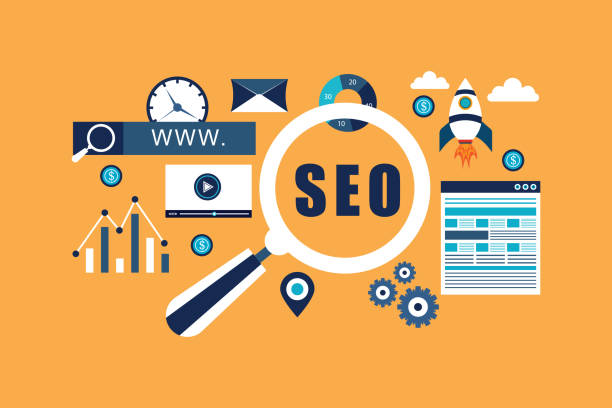
Site loading speed is an important factor in on-page SEO that directly affects user experience and site ranking in search engines.
Users who wait for a web page to load may get tired and leave the site, which leads to an increase in bounce rate and a decrease in site ranking.
To improve site loading speed, you can take several steps.
First, you should use quality hosting.
Poor hosting can significantly slow down site loading speed.
Second, you should use an optimized content management system (CMS).
Heavy and complex content management systems can slow down site loading speed.
Third, you should use an optimized theme.
Heavy and complex themes can slow down site loading speed.
Fourth, you should optimize site images (as described in the previous section).
Fifth, you should use cache.
The cache stores a version of the site’s pages and quickly displays this version when a user requests it.
Sixth, you should use Gzip compression.
Gzip compression reduces the size of the site’s files and increases their loading speed.
Seventh, you should optimize the site’s HTML, CSS, and JavaScript code.
Extra and unnecessary code can slow down site loading speed.
Eighth, you should use a content distribution network (CDN).
A CDN stores site content on different servers around the world and, when a user requests content, delivers it from the server closest to the user.
By improving site loading speed, you can increase user experience, reduce bounce rate, and improve your site ranking in search engines.
Site loading speed is a key factor in on-page SEO that should not be ignored.
Optimizing URL Structure
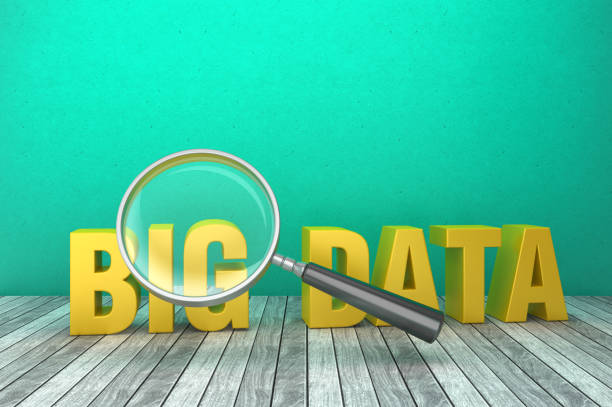
The URL (Uniform Resource Locator) structure, or the address of web pages, plays an important role in on-page SEO.
An optimized URL structure helps search engines and users better understand the content of the page and easily navigate your site.
To optimize URL structure, you must follow a few points.
First, you should use short and descriptive URLs.
Long and complex URLs are difficult for users and search engines.
Second, you should use the page’s primary keywords in the URL.
Third, you should use lowercase letters in the URL.
Search engines are case-sensitive and may treat the same URLs with different letters as two different URLs.
Fourth, you should use a hyphen (-) instead of a space ( ) in the URL.
Search engines do not properly recognize spaces and may not interpret the URL correctly.
For example, if your page is about “Laptop Buying Guide,” the page URL could be “www.example.com/laptop-buying-guide.”
This URL is short, descriptive, and includes the page’s primary keywords.
The URL structure should be logical and organized.
URLs should indicate which section of the site the page is located in.
For example, if your page is about “Lenovo Laptop Review” and is located in the “Laptops” section of the site, the page URL could be “www.example.com/laptops/lenovo-laptop-review.”
By optimizing URL structure, you can help search engines and users better understand your site’s content and easily navigate your site.
An optimized URL structure is an important factor in on-page SEO that can help improve your site ranking.
| Feature | Description |
|---|---|
| Short and Descriptive | The address should be short and relevant to the page content. |
| Use of Keywords | Includes the page’s primary keywords. |
| Lowercase Letters | Use lowercase letters instead of uppercase letters. |
Optimizing for Responsive Design

In today’s world, most users access the internet through mobile devices.
Therefore, optimizing for Responsive Design is a critical factor in on-page SEO.
Responsive design means that your website automatically adapts to the screen size of different devices such as mobile phones, tablets, and computers.
Search engines, including Google, prioritize responsive websites and rank them higher in search results.
Google has officially announced that responsive design is an important factor in website ranking.
A non-responsive website may not display correctly on mobile devices and create an unfavorable user experience for users.
To ensure that your website is responsive, you can use various tools.
Google’s Mobile-Friendly Test is one such tool that allows you to check whether your website is optimized for mobile devices.
You can also test your website on different devices to make sure it displays correctly.
If your website is not responsive, you should optimize it as soon as possible.
You can hire a web developer or use a responsive template.
Responsive design is an important investment in on-page SEO that can help improve your site ranking and attract more traffic.
By using responsive design, you can ensure that your website is accessible to all users and provides a satisfactory user experience.
This can lead to an increase in conversion rate and improve the overall performance of your business.
On-page SEO using responsive design is a requirement, not a choice.
Tired of your company’s website not being seen as it should be and losing potential customers? With professional and effective website design by Rasaweb, solve this problem forever!
✅ Increase brand credibility and build customer trust
✅ Attract targeted sales leads
⚡ Contact us now for a free consultation!
Using Schema Markup
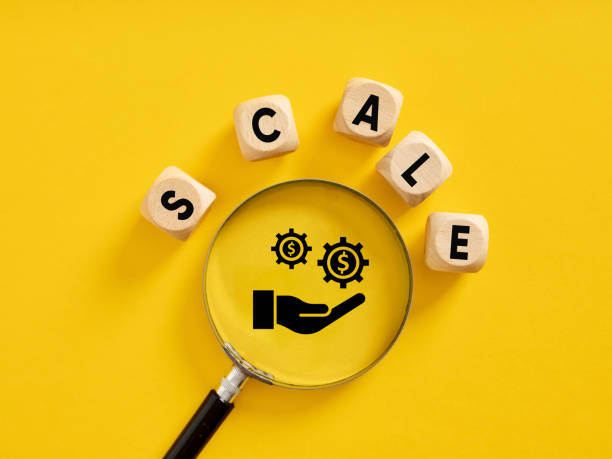
Schema Markup is code that helps search engines better understand the content of web pages.
By using Schema Markup, you can provide search engines with more accurate information about products, services, articles, events, and other types of content.
Schema Markup helps search engines understand the content of web pages in a structured and understandable way.
This can lead to the display of richer search results (Rich Snippets) that include additional information such as ratings, prices, images, and other details.
Richer search results are more appealing to users and can increase the click-through rate (CTR).
To use Schema Markup, you can use various tools.
Google’s Structured Data Markup Helper is one such tool that allows you to easily create Schema Markup code.
You can also use SEO plugins like Yoast SEO and Rank Math, which provide the ability to add Schema Markup to web pages.
There are different types of Schema Markup that you can use.
Schema Markup is available for products, services, articles, events, recipes, reviews, and other types of content.
Choosing the appropriate type of Schema Markup depends on the type of content on your page.
By using Schema Markup, you can help search engines better understand your site content, display richer search results, and increase click-through rates.
Schema Markup is an advanced on-page SEO technique that can help improve your site ranking.
On-page SEO using Schema Markup is considered a competitive advantage.
Analyzing and Measuring On-Page SEO Results
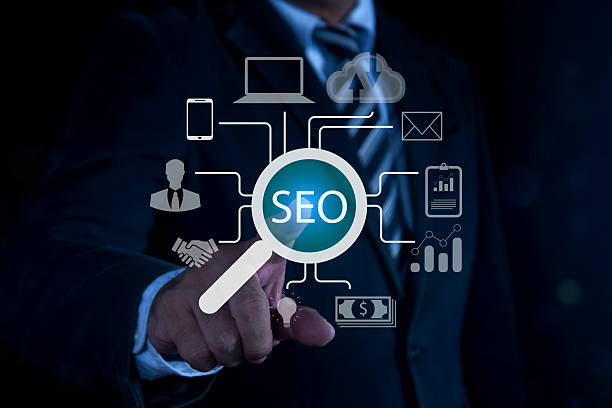
On-page SEO is an ongoing process that requires continuous analysis and measurement.
To know whether your on-page SEO strategy is effective or not, you need to regularly review and evaluate its results.
This will help you identify your strengths and weaknesses and improve your strategy.
To analyze and measure on-page SEO results, you can use various tools.
Google Analytics is one such tool that allows you to track your site traffic, identify traffic sources, track user behavior, and measure conversion rates.
Google Search Console is also another tool that allows you to track your site performance in Google search results, identify keywords that your site ranks for, find site errors, and submit index requests.
Using these tools, you can gain valuable information about your on-page SEO performance.
You can check whether your site’s organic traffic is increasing or decreasing, which pages on your site attract the most traffic, which keywords drive the most traffic to your site, and what behavior users exhibit on your site.
On-page SEO requires continuous monitoring.
By analyzing this information, you can identify your strengths and weaknesses and improve your on-page SEO strategy.
For example, if you notice that your site’s organic traffic is decreasing, you can check whether changes in search engine algorithms have occurred, whether your competitors have improved their SEO strategy, and whether your site content needs to be updated.
By constantly measuring on-page SEO results, you can ensure that your strategy is effective and helps you achieve your goals.
Analyzing and measuring results is a critical step in on-page SEO that should not be ignored.
Remarkable results can be achieved with targeted and continuous on-page SEO.
Frequently Asked Questions
| No. | Question | Answer |
|---|---|---|
| 1 | What is On-Page SEO? | On-page SEO refers to a set of actions taken within a website to optimize its pages in order to achieve a better ranking in search results. |
| 2 | What is the most important factor in on-page SEO? | High-quality, relevant, and comprehensive content that meets user needs is the most important factor in on-page SEO. |
| 3 | What role does the Title Tag play in on-page SEO? | The title tag is one of the most important factors that tell search engines and users what the page content is about. It should include the main keyword and be attractive. |
| 4 | How important is the Meta Description tag? | Although it does not directly affect ranking, it is very effective on the click-through rate (CTR) in search results and encourages users to visit the page. |
| 5 | How is image optimization done in on-page SEO? | By using the appropriate alt tag, compressing the image size to increase loading speed, and naming the image file meaningfully. |
| 6 | What is the importance of using headings (H1, H2, H3) in on-page SEO? | Headings help structure content, increase readability, and help search engines understand the hierarchy and sub-topics of the content. |
| 7 | What does Internal Linking mean and what are its benefits? | Internal linking means creating links between different pages of a website. This helps to distribute authority, improve user navigation, and assist search engine crawling. |
| 8 | Where should the Focus Keyword be placed on the page? | The main keyword should be placed in the title tag, meta description, H1, first paragraph, and naturally throughout the text and, if possible, in the URL. |
| 9 | What effect does duplicate or copied content have on on-page SEO? | Duplicate content can damage the site’s ranking and confuse search engines as to which version is the original, and they may recognize it as spam. |
| 10 | How important is page loading speed in on-page SEO? | Page loading speed is an important ranking factor and directly affects user experience. Slow pages increase the bounce rate of users. |
And other services of Rasa Web advertising agency in the field of advertising
Intelligent Customer Journey Map: A novel service to increase digital branding through intelligent data analysis.
Intelligent Marketing Automation: An effective tool to improve SEO ranking with accurate audience targeting.
Intelligent Brand Identity: A creative platform to improve sales growth using real data.
Intelligent Google Ads: Professional optimization for online growth using marketing automation.
Intelligent Sales Automation: Professional optimization to increase website traffic using user experience customization.
And more than a hundred other services in the field of internet advertising, advertising consulting and organizational solutions
Internet Advertising | Advertising Strategy | Advertorial
Resources
What is On-Page SEO and why is it important?
,What is On Page SEO? On-page SEO training in a practical and step-by-step manner
,What is On-Page SEO? On-Page Optimization Training
,What is On-Page SEO? Complete On-Page SEO training with golden techniques
? For a leap in your business in the digital world and to reach the peak of success, Rasaweb Afrin Digital Marketing Agency, with expertise in online store design and comprehensive marketing strategies, is with you to experience a powerful and profitable presence.
📍 Tehran, Mirdamad Street, next to the Central Bank, South Kazerun Alley, Ramin Alley No. 6



